What is ALMA used for?
The Atacama Large Millimeter/submillimeter Array (ALMA) is the precision multitool for mapping the detailed, but once hidden, activities of the Cosmos.
ALMA is the premier telescope for studying the first stars and galaxies that emerged from the cosmic “dark ages” billions of years ago. We find them at great cosmic distances, and by the time their light reaches us most of it has stretched out to millimeter and submillimeter wavelengths due to the expansion of the Universe.
In the more nearby Universe, ALMA provides an unprecedented ability to study the processes of star and planet formation. Radio light can pass through the dust that obscures visible-light observations, so ALMA can reveal the details of young, still-forming stars and planets.
Using the Universe as a giant chemistry laboratory, ALMA allows scientists to learn in detail about the complex molecules of the giant clouds of gas and dust that spawn stars and planetary systems.
Cosmology and the Distant Universe
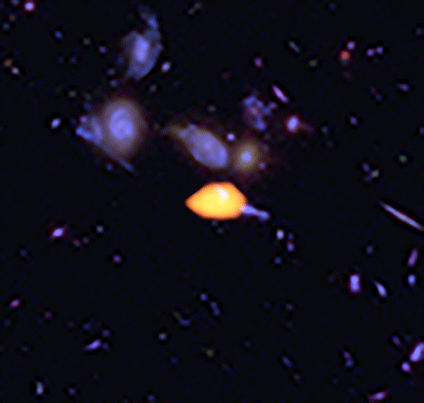
ALMA’s radio observations revealed vast clouds rich in carbon monoxide, which is a by-product of the earliest stars. Through these observations, astronomers can probe the Golden Age of galaxy formation, and see how the galaxies of the Hubble Ultra Deep Field formed. They have found that stars form in massive galaxies at a much higher rate than in smaller galaxies, which sets the stage for the cosmic structures we see in the modern universe.
ALMA has also opened a new window on the earliest galaxies by observing their redshifted emission lines of doubly ionized oxygen. This is also a by-product of early stars and found in heated regions of a galaxy. By combining these observations with other emission lines of carbon and nitrogen, astronomers can study the physical and chemical properties of young galaxies. They can see young starburst galaxies, where stars form at an incredible rate, and can observe the rapid growth of supermassive black holes.
Galaxies and Active Galactic Nuclei
ALMA can capture high-resolution images of the molecular gas in galaxies, revealing detailed structures within spiral galaxiesSpiral GalaxyA galaxy that is shaped like a flattened rotating disk full of young stars, a central bulge of generally older stars, and a surrounding halo of older stars and dense clusters of old stars called globular clusters. The disk is prominent due to the presence of young, hot stars in a spiral pattern. , elliptical galaxiesElliptical GalaxyA galaxy that appears round or elliptical in shape, typically containing little gas and dust, no spiral arms or disk, mostly older stars, which range in shape from spherical to "football" shaped, and few hot, bright stars., and dwarf galaxiesDwarf GalaxyA galaxy that is significantly smaller in size compared to a normal galaxy. Dwarf galaxies are low in luminosity, and often irregular or elliptical in shape.. By studying the similarities and differences in these structures, astronomers can explore the relationships between star formation and galactic structure.
For nearby galaxies such as the Magellanic clouds, ALMA can study individual molecular clouds within them. ALMA research has shown these galaxies have a rate of star formation that is 10 times greater than the formation rate in our solar neighborhood.
The nuclei of galaxies are dense regions often obscured by gas and dust, making them difficult for optical telescopes to study. ALMA can peer through this dust, and determine the masses and motions of these regions with high precision. It can even image the distributions of a variety of molecules within galactic nuclei.
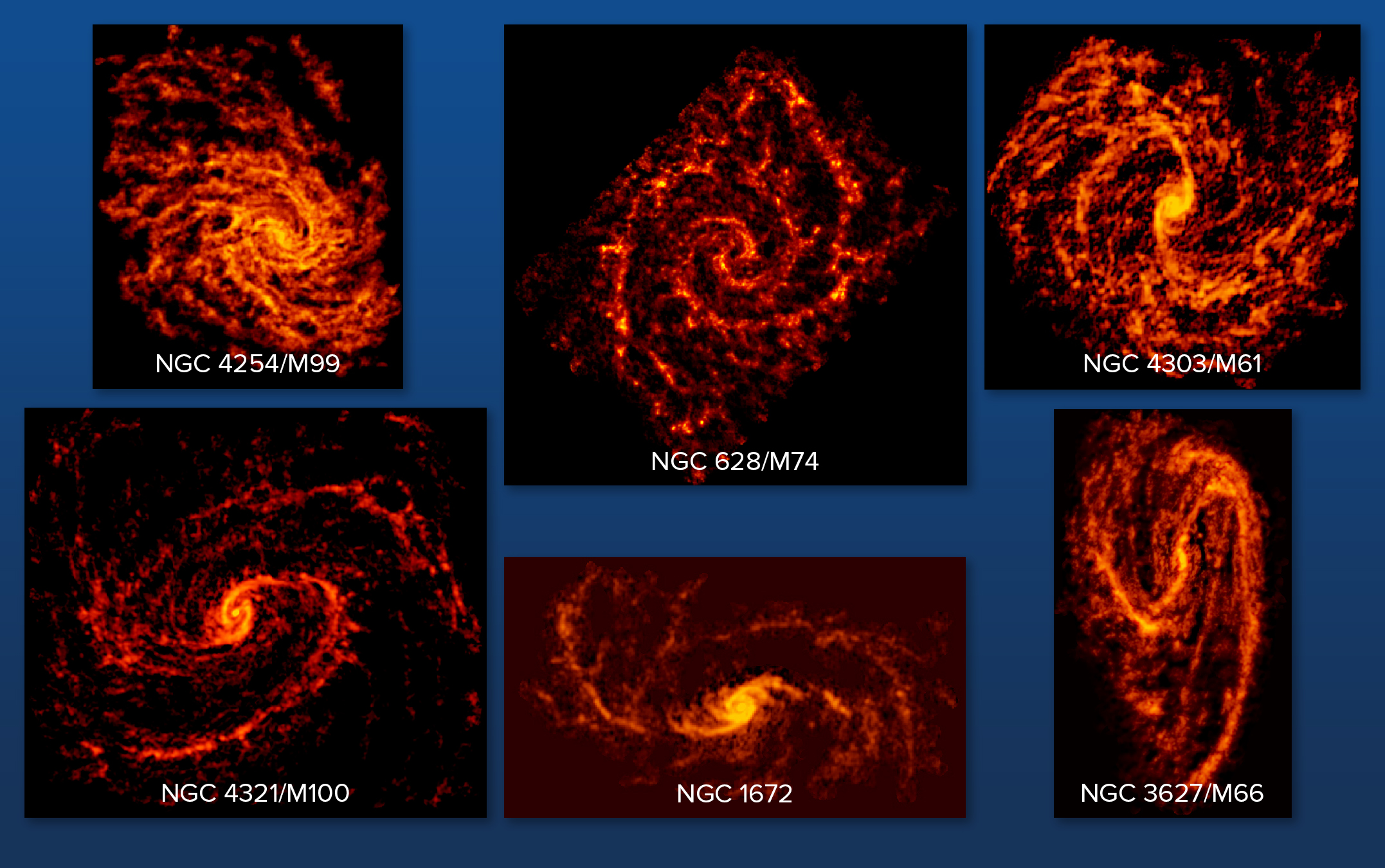
Our own galactic center provides a unique opportunity to study the physical processes occurring in a galactic nucleus. With ALMA, astronomers can study the nature of the molecular cloudsMolecular CloudAn interstellar gas cloud where molecular formation occurs. Over 125 different molecules from molecular clouds have now been discovered in interstellar space through radio wavelength observations. at the center of our galaxy. The central region of our galaxy is a crowded environment with strong magnetic fields and frequent collisions between molecular clouds. At the center lies Sgr A*, our galaxy’s supermassive black holeSupermassive Black HoleA black hole that has a million or as much as a billion solar masses. These large black holes lurk at the centers of most galaxies., which ALMA has imaged as part of the Event Horizon Telescope (EHT) collaboration.
The Interstellar Medium
Interstellar gas and dust are concentrated into large regions known as molecular cloudsMolecular CloudAn interstellar gas cloud where molecular formation occurs. Over 125 different molecules from molecular clouds have now been discovered in interstellar space through radio wavelength observations.. This interstellar medium has such a low density that it is nearly a vacuum by laboratory standards. These molecular clouds are also very cold, with temperatures of only 10-50 K (-440 F/-260 C). Their molecules rarely collide in them, but can lead to chemical reactions. The chemical composition of Earth has its origin in the interstellar medium.
Molecular hydrogen is the most abundant gas molecule in space and is formed when two hydrogen atoms stick to the surface of a dust grain and interact along the surface until they merge as a molecule. When these molecules collide with other molecules, they can emit millimeter or submillimeter wavelength, which ALMA can observe. This allows astronomers to study the structure of galaxies. After molecular hydrogen, the most abundant molecule we find is carbon monoxide (CO), which astronomers use to map out interstellar clouds in nearby as well as in distant galaxies.
More than 180 different kinds of molecules have been found in space, and ALMA can see many of them. Most of the molecules are organic (carbon-containing), including ones similar to Earth-like molecules but others are a strange assortment of species that could never be stable on Earth. There is also evidence for much larger molecules such as polycyclic aromatic hydrocarbons, which resemble the soot from automobile emissions.
The Origin of Planets and Our Solar System
Thousands of planets have now been discovered around main-sequence stars. ALMA helps astronomers understand the origin of these planets by imaging the gas and dust in protoplanetary disksProtoplanetary DiskThe swirling disk of dust and gas that collapsed from a much larger cloud of material that will eventually evolve into a fully fledged planetary system. Features in the disk may already herald the presence of young planets.. These disks form around young stars, and by studying their dynamics and evolution astronomers can understand where in the disk planets form, when they form, and how planetary systems evolve. ALMA can see planetary systems in the earliest stages of their formation.
ALMA observations provide a number of diagnostics to investigate the formation of plants. ALMA has produced spectacular high-resolution images of disks that have revealed gaps, bright rings, asymmetries, spirals, and other structures in both the gas and dust. While the exact role these structures play in the planet formation process remains under debate, the ubiquity of these structures indicates they are an important step in the planet formation process. ALMA spectral line observations provide sensitive diagnostics of the chemistry and abundance variations within disks that will impact the atmospheric composition of the gas giant planets. ALMA continuum and spectral line observations can also provide evidence for planets embedded within these disks. Gas and dust within a disk orbit the star in what is known as Keplarian motion. Continuum observations can observe this, and can also see regions within the disk that deviate from Keplerian motion. These deviations are suggest the presence of embedded planets.
ALMA can also investigate how planets form by measuring how the disk demographics change with stellar age. ALMA has conducted several surveys of hundreds of disks in star-forming regions with different ages and has measured how the gas content, disk sizes, and structures evolve. Sensitive ALMA imaging of debris disks has identified rings and belts of dust emissions that trace the distribution of planetesimals formed from the planet formation process.
Our solar system also formed within a protoplanetary disk. By comparing early planetary systems with our own, astronomers can study the origin of our solar system. ALMA has explored the Solar System from its small cold distant bodies, to its planets and moons, and to the Sun, resulting in sensitive high-resolution images of their surfaces and atmospheres.
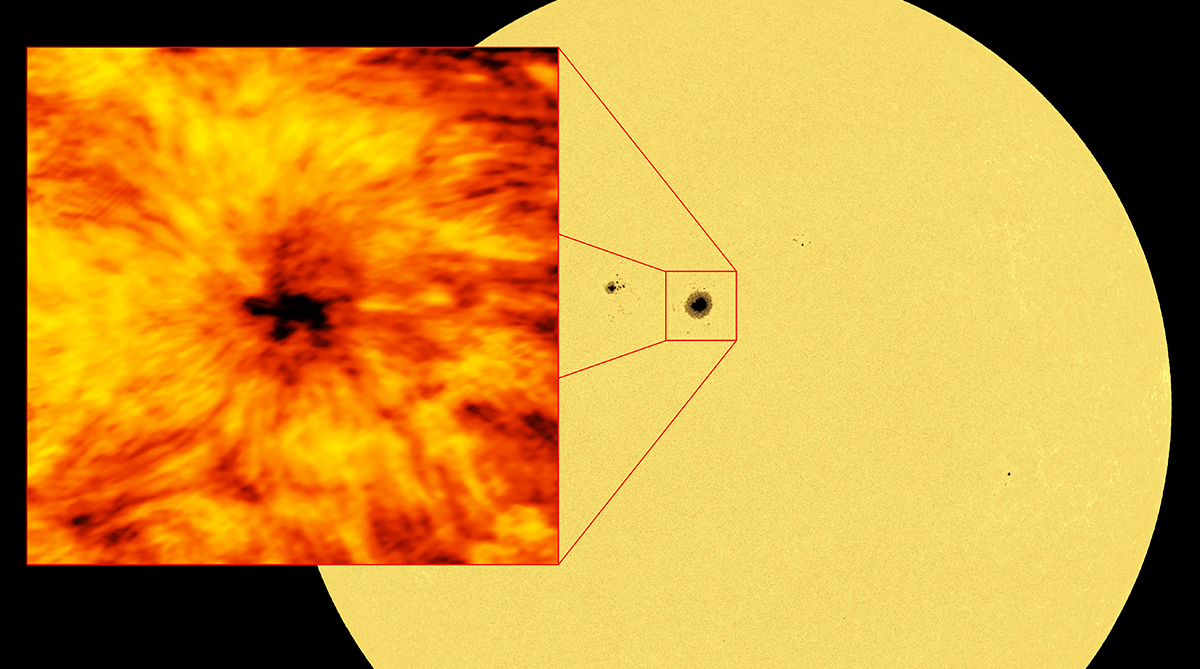
ALMA has developed the ability to image the Sun’s activity at longer wavelengths than observed with typical solar telescopes on Earth. These observations provide important data that can be used to probe the physics of the Sun. Since the Sun is many billions of times brighter than the faint objects ALMA typically observes, the solar commissioning team developed special procedures to enable ALMA to safely image the Sun.
Event Horizon Telescope
The Event Horizon Telescope (EHT) is a worldwide network of radio astronomy facilities linked together with the goal of studying one of the most exciting objects in the known universe — the edge of a supermassive black hole.
Black holes are ultra-dense concentrations of matter in space. They warp space around them so intensely that even a beam of light can be trapped if it passes too close to a black hole. Stellar-mass black holes are formed when massive stars die in a supernova explosion. Supermassive black holes can be millions or billions of times more massive than the Sun. Most galaxies contain a supermassive black hole. The supermassive black holeSupermassive Black HoleA black hole that has a million or as much as a billion solar masses. These large black holes lurk at the centers of most galaxies. in our Milky Way galaxy, known as Sagittarius A*, is about 4 million solar masses. It is shrouded from optical telescopes by dense clouds of gas and dust in the center of our galaxy.
Although galactic black holes are extremely massive, their incredible density means they do not appear as large objects in the sky. Sagittarius A* is just 26,000 light-years from Earth, but it appears as a tiny dot in the constellation Sagittarius. To image the edge of this black hole, radio astronomers needed to create a radio telescope with a resolutionResolutionThe ability of a telescope to show detail. One common way to describe the resolution of a telescope is to state the minimum angular separation at which a double star can be distinguished as two separate stars. (see double star for more) greater than any telescope built before.
To create such a high-resolution radio telescope, astronomers used a technique known as Very Long Baseline Interferometry (VLBI). Instead of building a single giant antenna dish, they connected radio observatories across the world, combining their observations to create a virtual telescope the size of Earth. The technique is built upon the interferometry methods long used by the Very Large Array (VLA) and the Atacama Large Millimeter/submillimeter Array (ALMA).
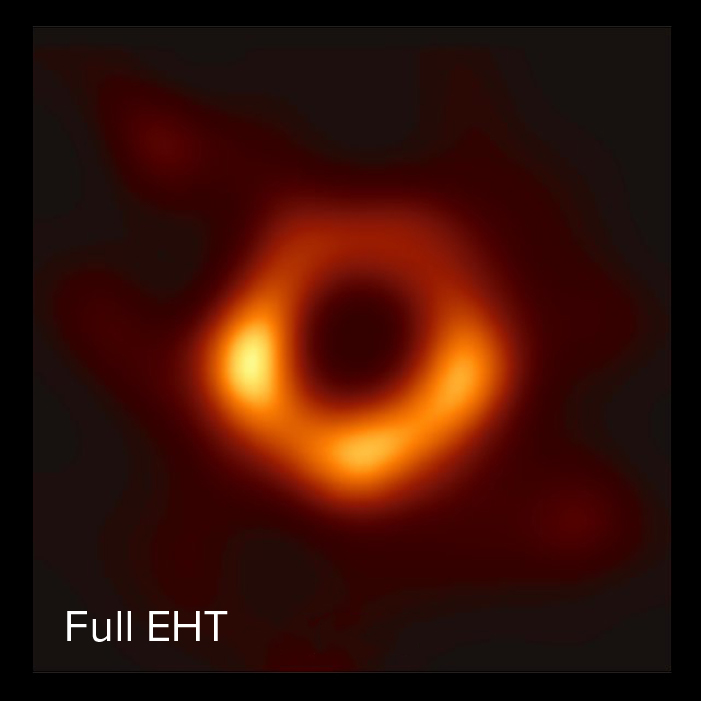
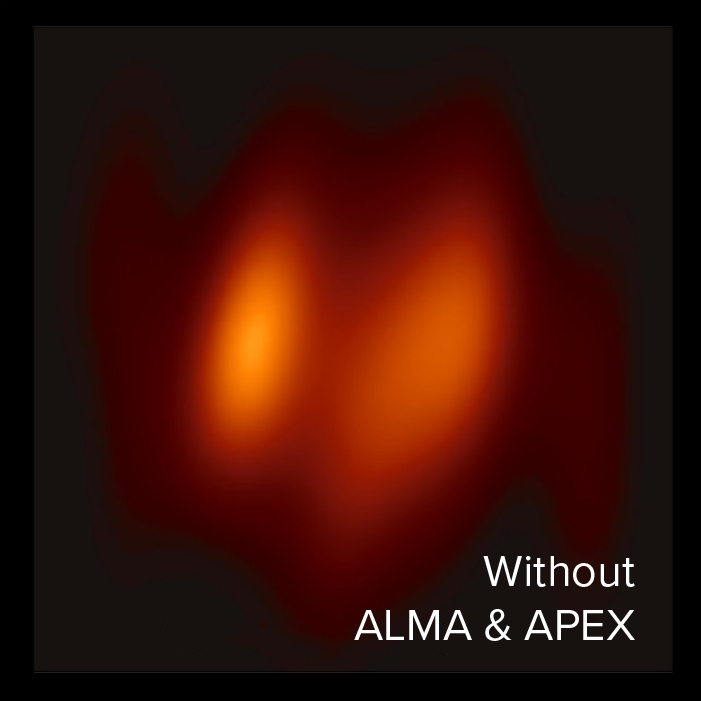
ALMA plays a crucial role in the EHT. By configuring ALMA’s 66 antennas to act as a single radio dish, more of the faint radio light near a black hole could be captured, allowing the EHT to create a brighter and more robust image. But ALMA normally operates as an array of dishes rather than a single dish, so it had to be reconfigured to operate as a phased array for the EHT. This was done in part by installing a custom-built atomic clock powered by a microwave laser. This high-precision clock allowed the 66 antenna signals of ALMA to be combined as a single observation.
In April 2017 the EHT began observations of the supermassive black hole M87*. This 4 billion mass black hole is in a galaxy 54 million light years from Earth. After years of gathering and processing data, the first image of M87* was published in 2019. Additional images of M87* have been published more recently. In 2022 the EHT published the first images of Sagittarius A*. These images and other data captured by the EHT have significantly deepened our understanding of black holes.




